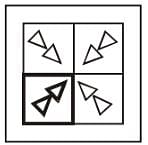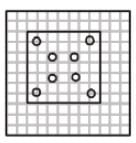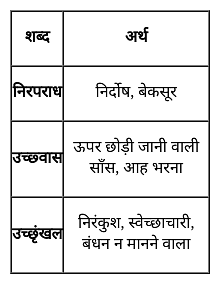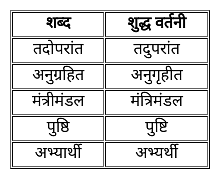NVS TGT Science Mock Test - 6 - NVS TGT/PGT MCQ
30 Questions MCQ Test - NVS TGT Science Mock Test - 6
By what percentage did India successfully reduce its GDP emission intensity between 2005 and 2019, achieving the target 11 years ahead of schedule?
What does Ashoka's wheel in the Indian National flag represent?
| 1 Crore+ students have signed up on EduRev. Have you? Download the App |
Buzi Bridge, which was inaugurated recently, was built by India in which country?
In the World Happiness Report 2024, what is India's ranking?
Which answer figure will complete the pattern in the question figure?

Direction: If a Paper (Transparent Sheet) is folded in a manner and a design or pattern is drawn. When unfolded this paper appears as given below in the answer figure. Choose the correct answer figure given below.
A piece of paper is folded and cut as shown below in the question figures. From the given answer figures, indicate how it will appear when opened.
Question Figure

Answer figure

Direction: Study the following question carefully and choose the right answer.
If in a code language, PAINT is written as 74128 and EXCEL is written as 93596, then how will ACCEPT be written in that language?
A dot matrix printer
(i) prints an entire line at time
(ii) is a non-impact printer
(iii) allows multiple copies to be taken at a time
(iv) prints one character at a time
Shalini investigates a topic thoroughly and does not need to be over-directed. In which learning phase is she?
The process of evaluation uses several methods because
A body starts to slide over a horizontal surface with an initial velocity of 0.2 m/s. Due to friction, its velocity decreases at the rate of 0.02 m/s2. How much time will it take for the body to stop?
An object is placed at a distance of 15 cm from a concave mirror and its real image is formed at 30 cm in front of that mirror. The focal length of the mirror is
Which one is correct as the new cartesian sign conventions ?
A body is said to be in non-uniform motion if it travels
The sound waves which travel in the air are called:
The area under a velocity-time graph is represented by the unit:
Which of the following is the INCORRECT method of preventing rusting?
Which one of the following decreases the extent of evaporation of water?
In a hydroelectric power plant more electrical power can be generated if water falls from a greater height because:
Animal husbandry is the scientific management of
(i) animal breeding
(ii) culture of animals
(iii) animal livestock
(iv) rearing of animals
Which of the following fuel is the least polluting ?
























